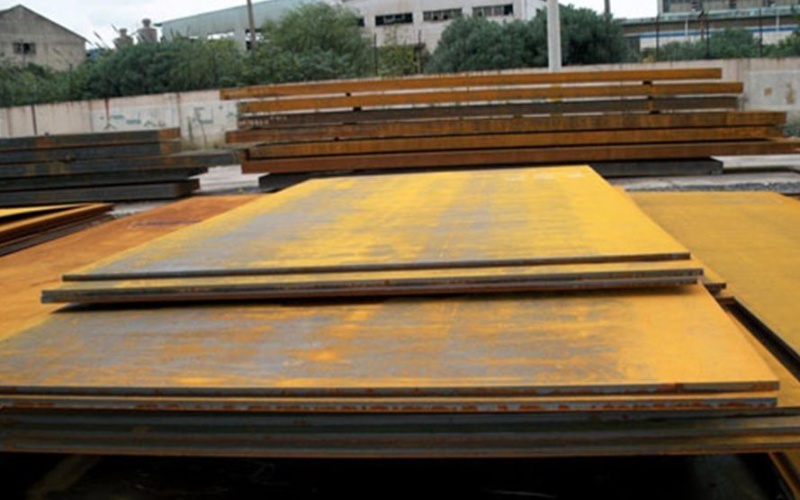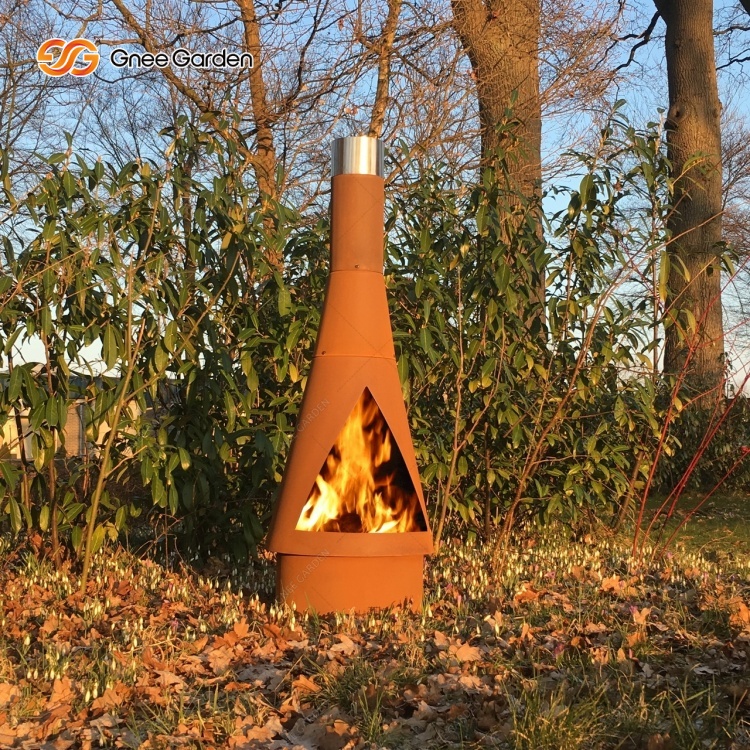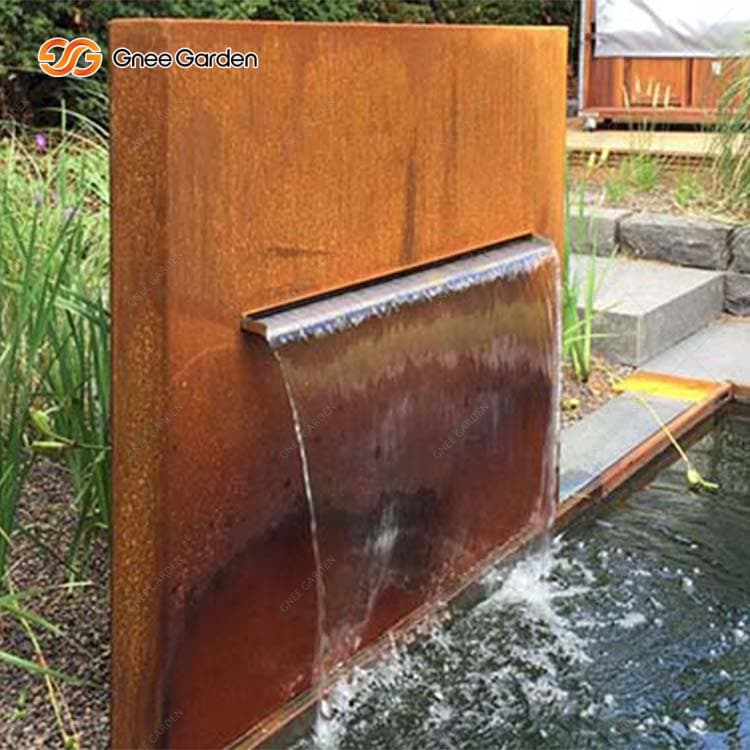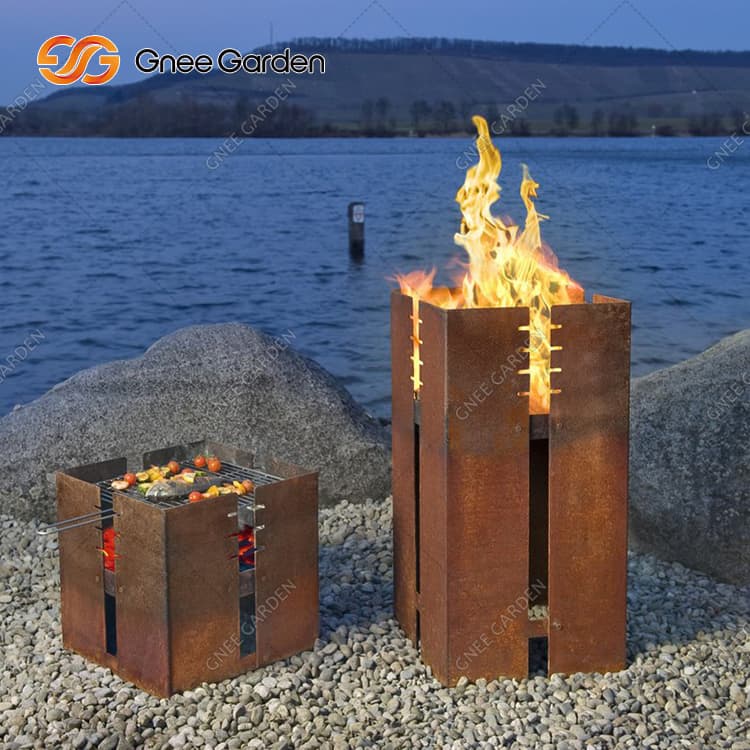Applications of Corten Steel in Landscape Design
Corten Steel Planters and Raised Beds
Among landscape designers and homeowners, Corten steel planters and raised beds are highly sought after. The material’s durability and resistance to corrosion make it ideal for creating planters that will stand the test of time, regardless of the climate. Furthermore, the rusty patina of Corten steel adds a natural and organic touch to any garden, serving as a visually captivating focal point.
Corten Steel Retaining Walls and Edging
For those seeking a modern and industrial look for their outdoor spaces, Corten steel retaining walls and edging are the perfect choice. The material’s strength and weather resistance make it suitable for constructing sturdy and long-lasting retaining walls that can withstand the pressure of the soil. Additionally, Corten steel edging can be employed to define pathways, flower beds, and other landscape features, adding structure and visual interest to the overall design.
Corten Steel Sculptures and Art Installations
When it comes to adding artistic elements to outdoor spaces, Corten steel sculptures and art installations are highly favored. The material’s unique rusty appearance adds character and texture to sculptures, resulting in a captivating visual impact. Moreover, Corten steel possesses the ability to age gracefully over time, blending harmoniously with the surrounding landscape and enhancing the allure of these art pieces.
Corten Steel Fire Pits and Water Features
Increasingly popular in landscape design, Corten steel fire pits and water features offer both durability and visual appeal. The material’s resistance to high temperatures and corrosion makes it an excellent choice for creating fire pits that are both sturdy and visually striking. As for water features, such as fountains or cascades, Corten steel adds a touch of tranquility and elegance to outdoor spaces, perfectly complementing the natural surroundings.

Benefits and Advantages of Using Corten Steel in Landscape Design
Corten steel, also known as weathering steel, offers numerous benefits and advantages when used in landscape design. From its exceptional durability and longevity to its low maintenance requirements and unique weathering process, Corten steel has become a popular choice among landscape architects and designers. It is a material that has captured the imagination of many designers and has been widely used in landscape projects.
Durability and Longevity of Corten Steel
One of the key advantages of Corten steel in landscape design is its exceptional durability and longevity. This type of steel is highly resistant to corrosion, making it ideal for outdoor applications. Corten steel forms a protective layer of rust on its surface when exposed to the elements, which not only enhances its visual appeal but also acts as a barrier against further corrosion. This natural weathering process ensures that Corten steel can withstand even the harshest weather conditions, including rain, snow, and extreme temperatures, without compromising its structural integrity. It is a material that stands the test of time, adding a sense of permanence to any landscape design.
Low Maintenance Requirements of Corten Steel
Another significant benefit of using Corten steel in landscape design is its low maintenance requirements. Unlike other materials that may require regular cleaning, sealing, or painting to maintain their appearance, Corten steel requires minimal upkeep. Its natural weathering process eliminates the need for ongoing maintenance, allowing for a hassle-free and cost-effective solution. Additionally, the unique patina that develops on the surface of Corten steel over time adds to its aesthetic appeal, further reducing the need for maintenance. It is a material that not only looks beautiful but also requires little effort to maintain its beauty.
Weathering Process and Unique Patina of Corten Steel
The weathering process of Corten steel is what sets it apart from other materials commonly used in landscape design. When exposed to the elements, Corten steel undergoes a chemical reaction that causes the formation of a protective layer of rust. This rust-like patina not only adds a distinctive and rustic appearance to the steel but also acts as a protective barrier against further corrosion. The unique patina continues to evolve over time, enhancing the visual appeal of Corten steel and making it a captivating element in any landscape design. It is a material that tells a story, with its surface bearing the marks of its journey through time and weather. The ever-changing patina adds depth and character to the landscape, creating a sense of connection with nature.
Considerations and Challenges in Working with Corten Steel
When incorporating Corten steel into a project, there are various considerations and challenges that need to be taken into account. From initial cost and budget considerations to proper installation and maintenance guidelines, as well as potential issues and challenges in using Corten steel in landscape design, it is important to be well-informed before embarking on a project involving this unique material.

Initial Cost and Budget Considerations
Before deciding to use Corten steel, it is essential to evaluate the initial cost and budget implications. While Corten steel is known for its durability and longevity, it can be more expensive than traditional steel due to its unique properties and manufacturing process. Additionally, factors such as the size and complexity of the project, as well as any additional treatments or finishes required, can impact the overall cost. It is crucial to carefully consider the budget and weigh the benefits against the initial investment.
Proper Installation and Maintenance Guidelines for Corten Steel
Proper installation and maintenance are crucial for ensuring the longevity and appearance of Corten steel. It is important to follow the manufacturer’s guidelines and work with experienced professionals who are familiar with working with this material. During installation, it is essential to use the correct techniques and tools to avoid damaging the steel’s protective layer. Regular maintenance, such as cleaning and applying protective coatings, is necessary to prevent corrosion and maintain the desired aesthetic. It is recommended to consult with experts and develop a maintenance plan specific to the project and location.
FAQs about Corten Steel in Landscape Design
What is Corten steel?
Corten steel, also known as weathering steel, is a low-alloy steel that forms a protective layer of rust when exposed to the elements. This layer acts as a barrier against further corrosion and gives the steel its distinctive appearance.
What is the composition of Corten steel?
Corten steel is primarily composed of iron, copper, chromium, and nickel. Small amounts of these elements enhance the steel’s resistance to corrosion and facilitate the formation of a stable oxide layer on its surface.
When was Corten steel first used?
Corten steel was first used in the 1930s by the United States Steel Corporation. It was initially used for railroad coal wagons, and its weathering properties were discovered when these wagons remained in good condition despite harsh weather conditions.
What are the unique properties of Corten steel?
Corten steel has exceptional resistance to atmospheric corrosion, reducing the need for protective coatings and maintenance. It also has high tensile strength, making it suitable for structural applications. Its rusty appearance adds aesthetic appeal, and it is environmentally friendly and recyclable.
How is Corten steel used in landscape design?
Corten steel is used in landscape design for various applications, including planters, raised beds, retaining walls, edging, sculptures, art installations, fire pits, and water features. Its durability and rustic appearance make it a versatile choice for enhancing outdoor spaces.






